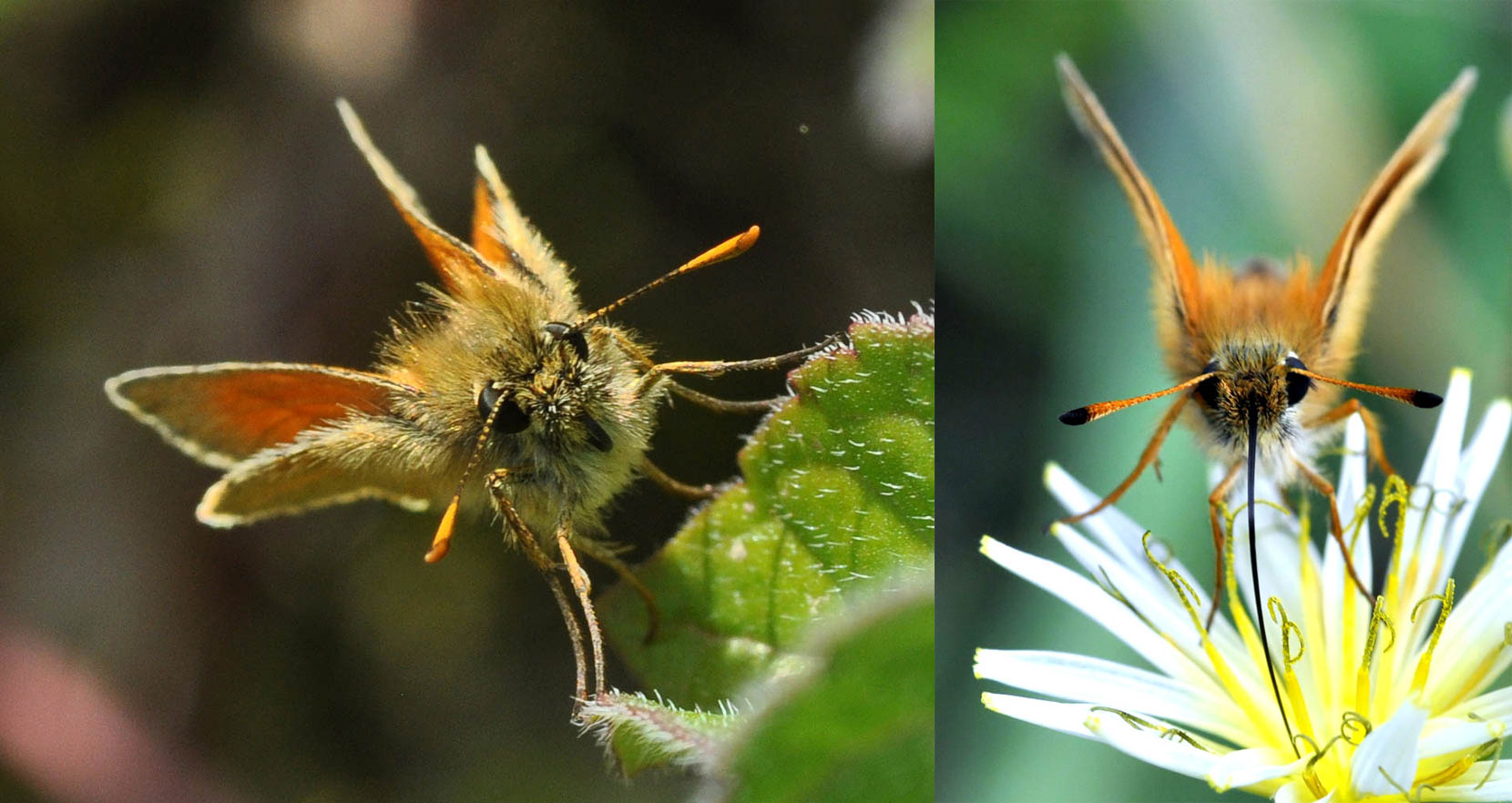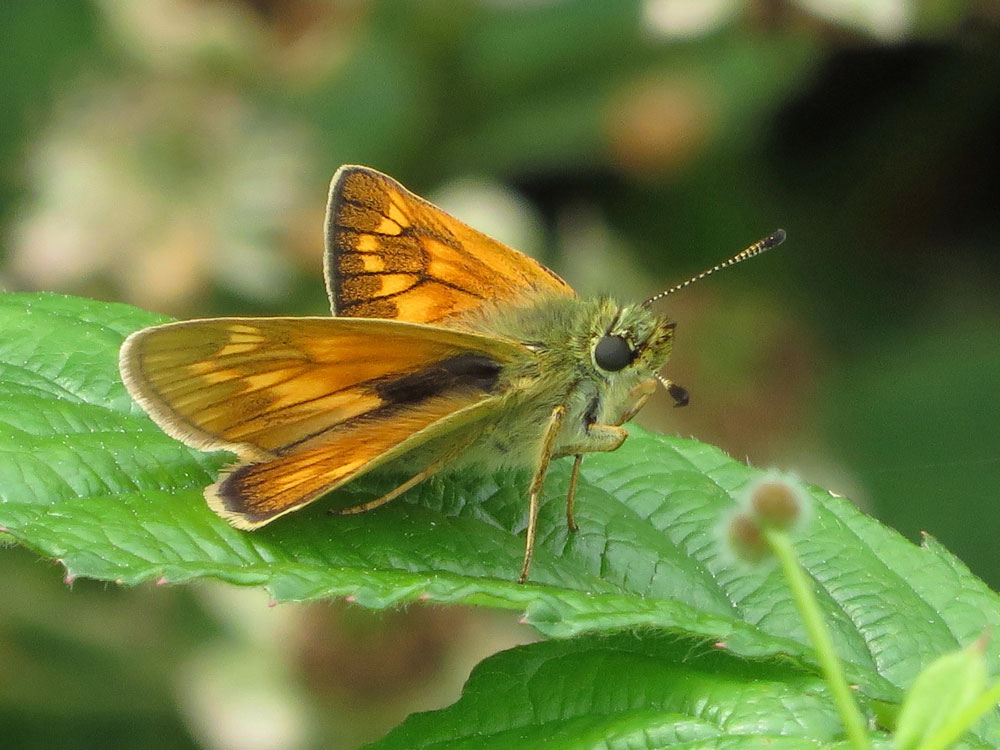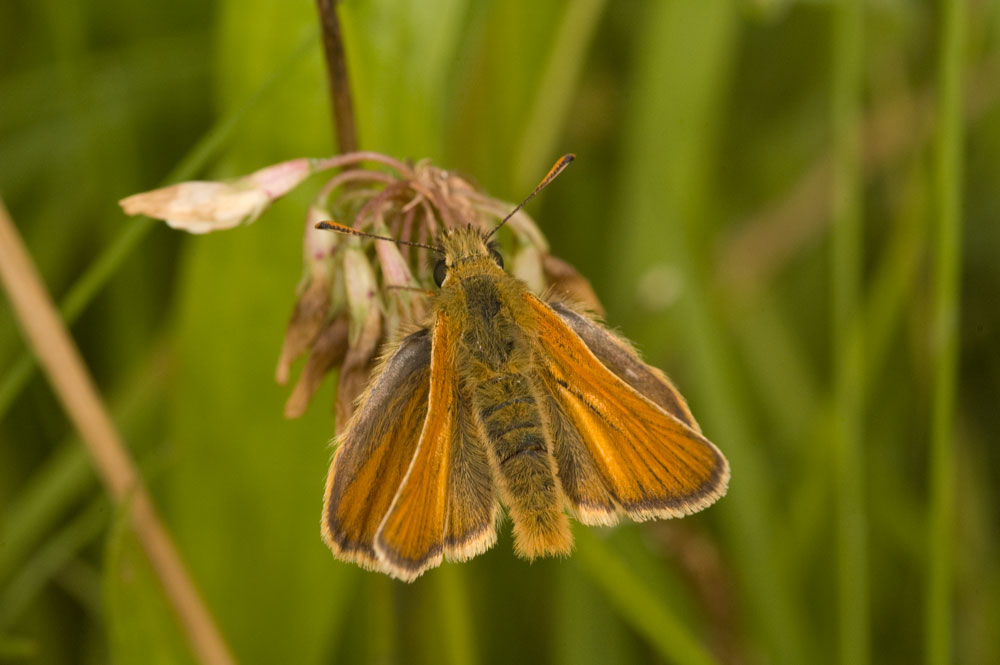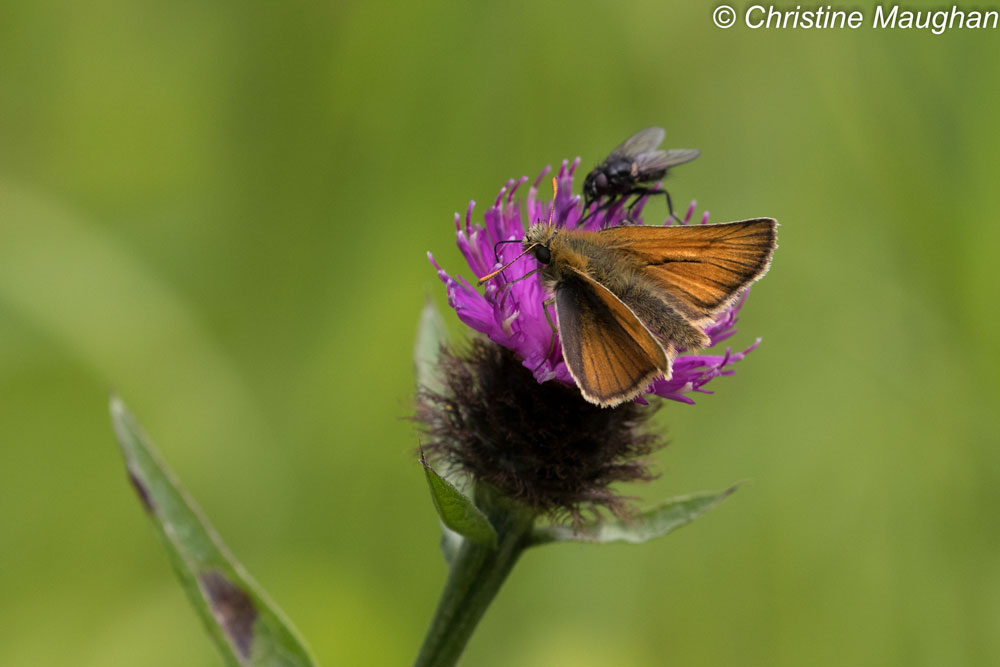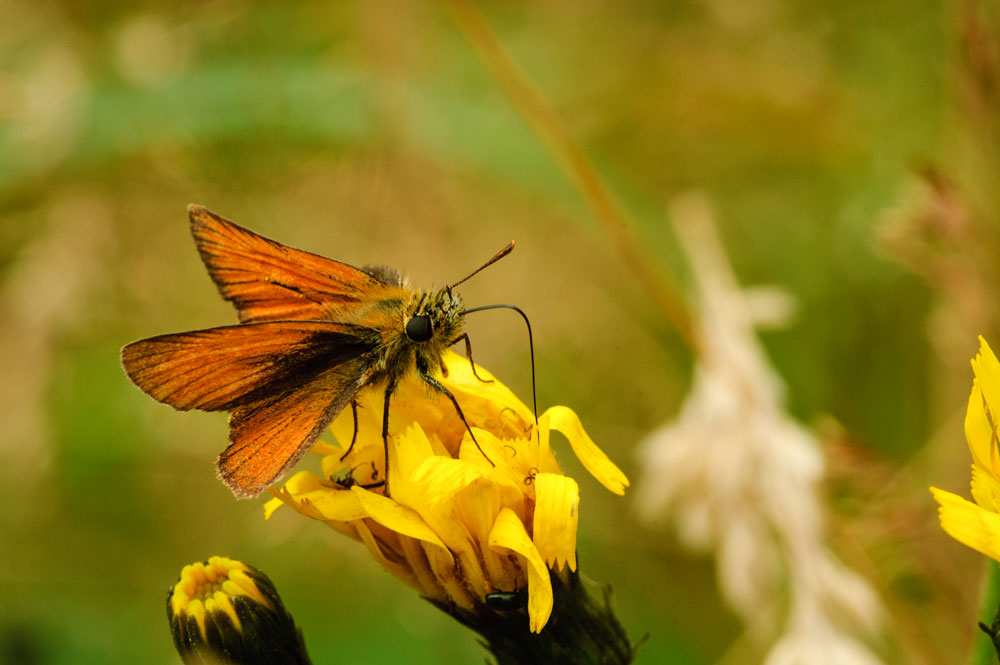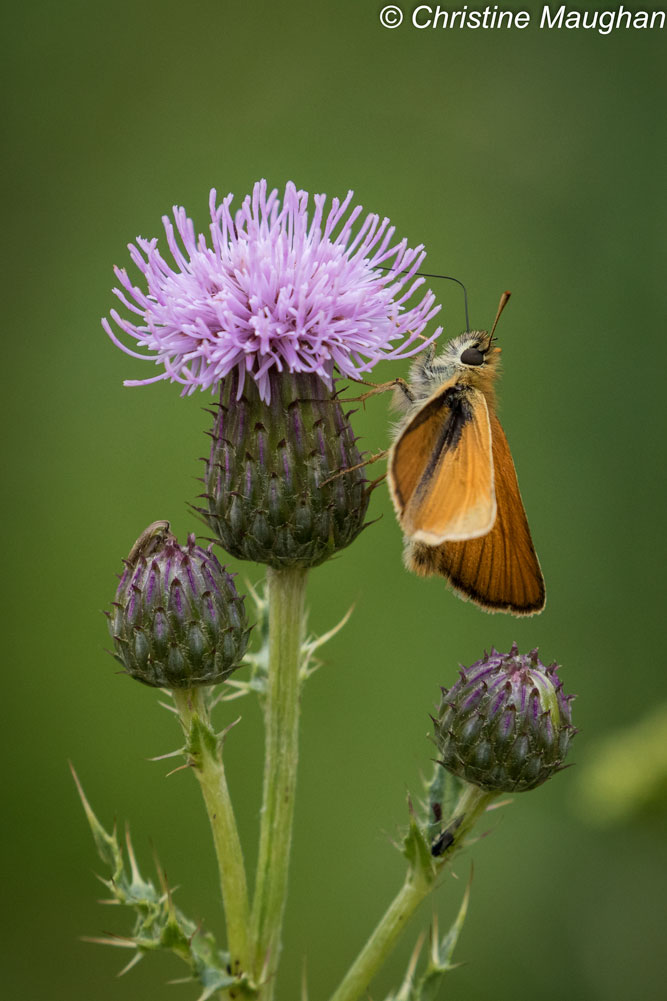
Small Skipper Thymelicus sylvestris
Habitat
The Small Skipper is a common and widespread species found in rough grassland and woodland edges, requiring an abundance of tall grasses and wild flowers. It prefers more open sites than the Large Skipper.
Identification
It has unmarked golden-orange wings, although the forewing of the male carries a distinctive dark line or sex brand. It can be easily confused with the Essex Skipper, but the underside of the tips of its antennae are orange whilst they are black in the Essex Skipper.
Flight times
It appears in early June and flies until the beginning of September.
Food plants
Eggs are laid in the sheaths of Yorkshire-fog or Creeping Soft-grass.
Distribution
Widely distributed throughout the region.
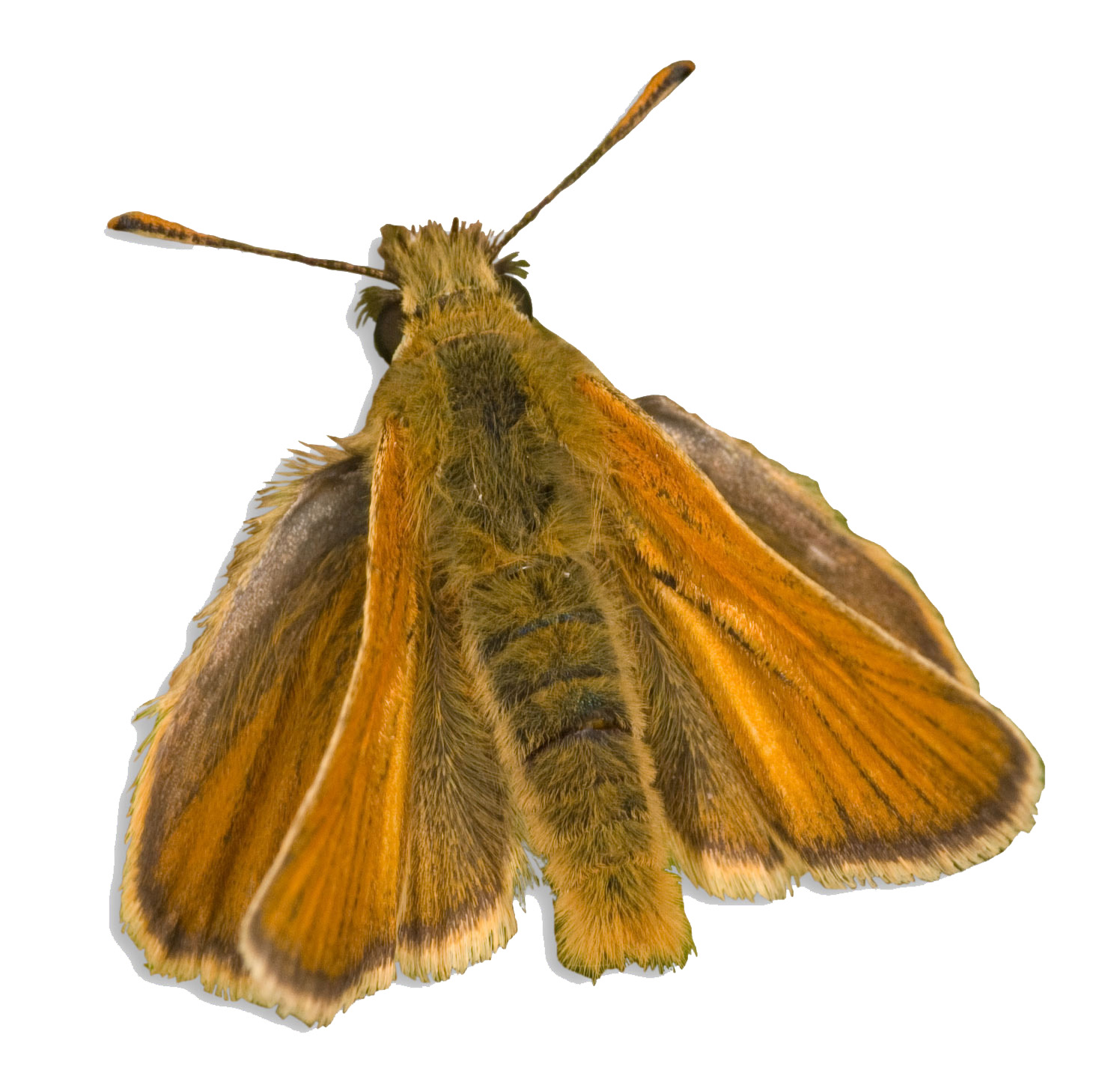
Distribution Maps
2005-2009
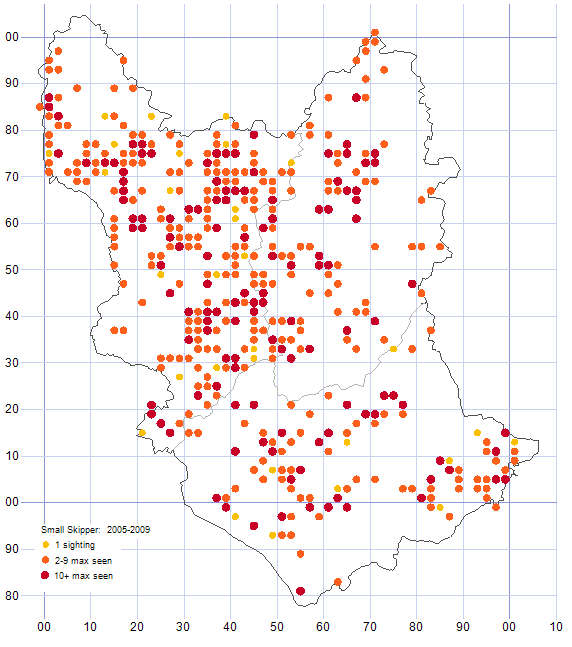
2010-2014
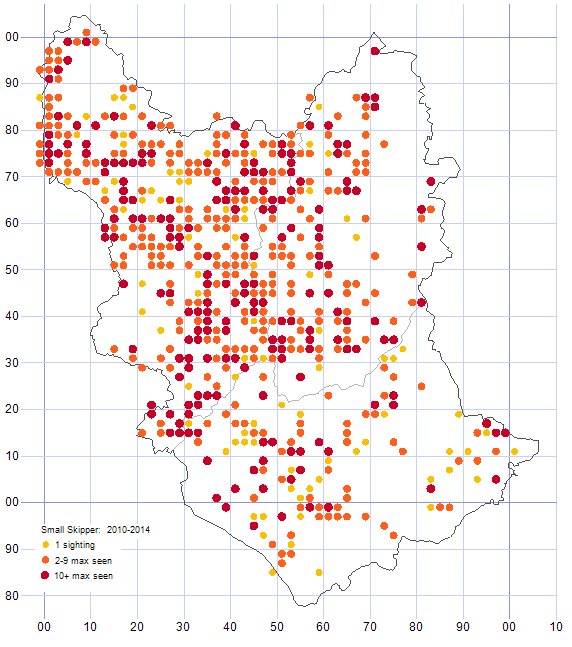
2015-2019
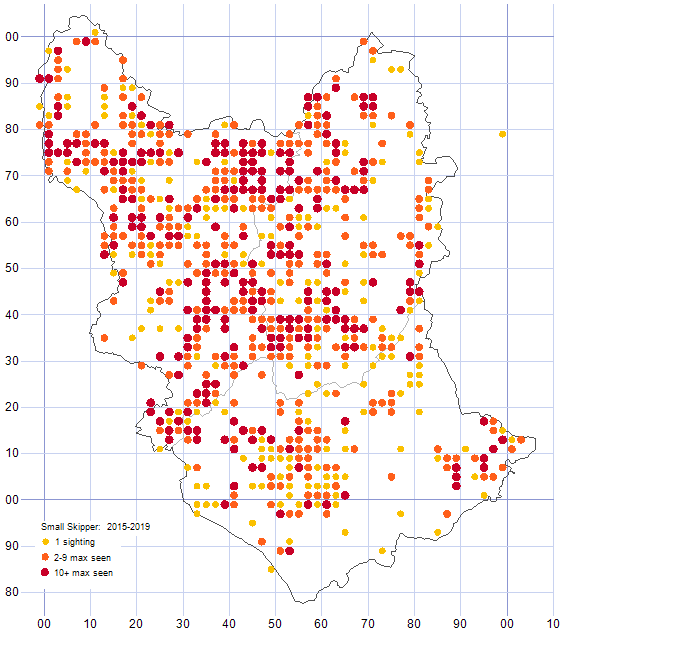
2015
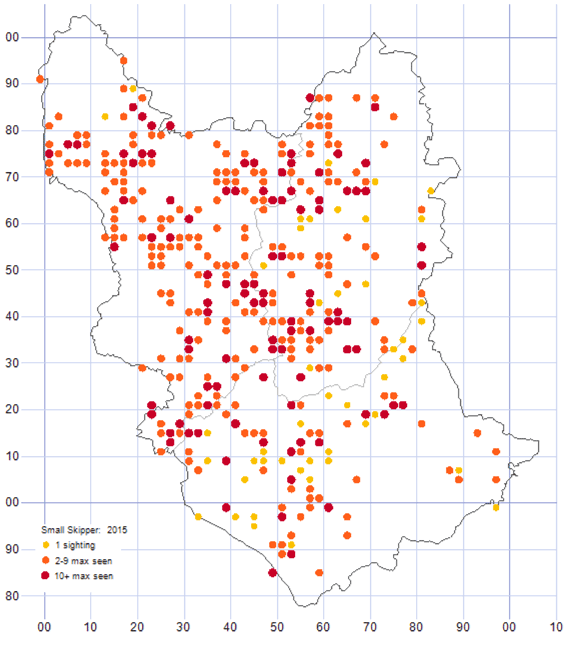
| No of tetrads | 373 |
|---|---|
| First sighting | 09/04/2015 |
| Last sighting | 18/09/2015 |
2016
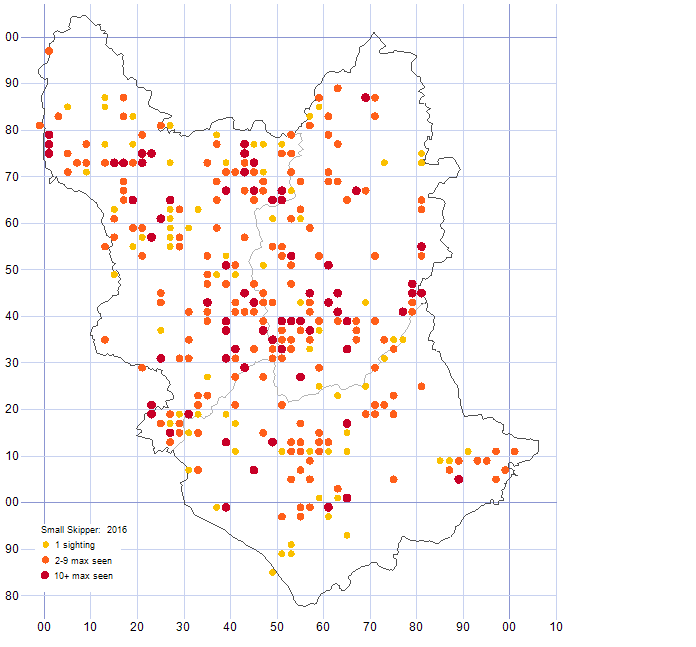
| No of tetrads | 310 |
|---|---|
| First sighting | 15/05/2016 |
| Last sighting | 20/09/2016 |
2017
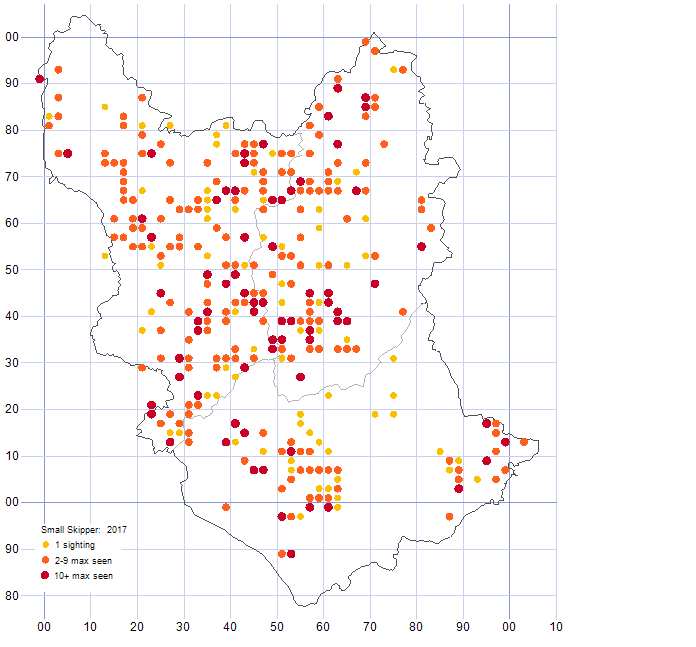
| No of tetrads | 318 |
|---|---|
| First sighting | 02/06/2017 |
| Last sighting | 04/09/2017 |
2018
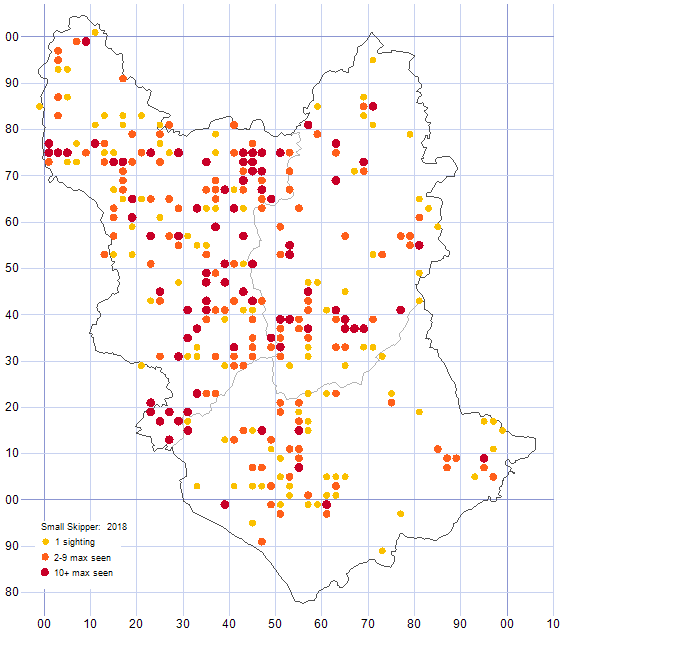
| No of tetrads | 303 |
|---|---|
| First sighting | 31/05/2018 |
| Last sighting | 04/09/2018 |
2019
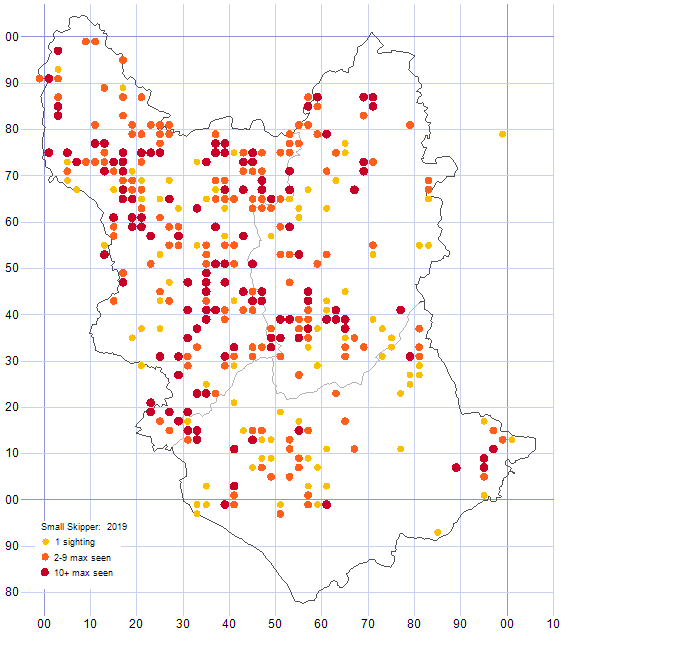
| No of tetrads | 350 |
|---|---|
| First sighting | 01/06/2019 |
| Last sighting | 15/09/2019 |
2020
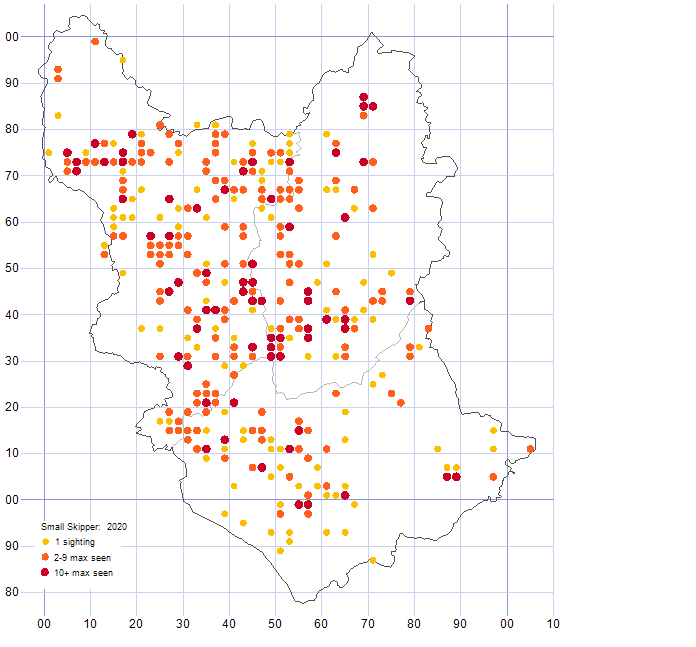
| No of tetrads | 325 |
|---|---|
| First sighting | 25/05/2020 |
| Last sighting | 21/09/2020 |
2021
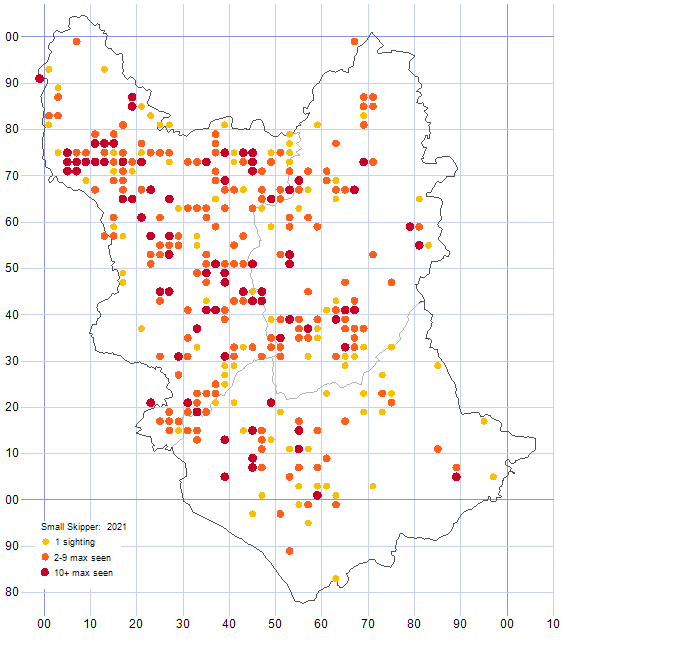
| No of tetrads | 324 |
|---|---|
| First sighting | 29/05/2021 |
| Last sighting | 25/09/2021 |
2022
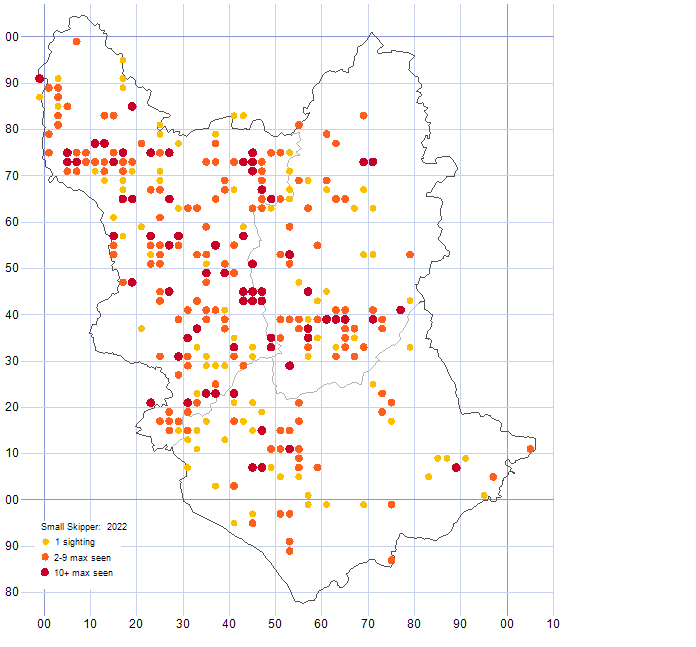
| No of tetrads | 298 |
|---|---|
| First sighting | 29/05/2022 |
| Last sighting | 28/08/2022 |
2023
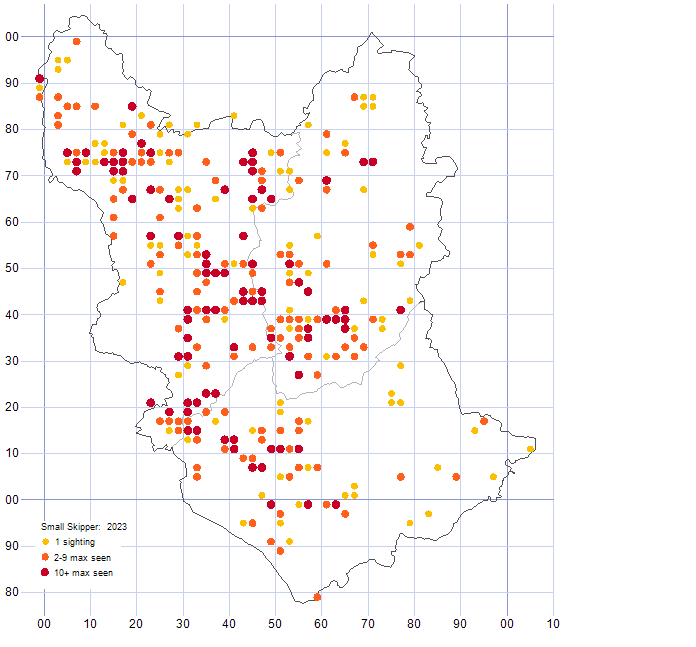
| No of tetrads | 296 |
|---|---|
| First sighting | 07/06/2023 |
| Last sighting | 15/09/2023 |
2024
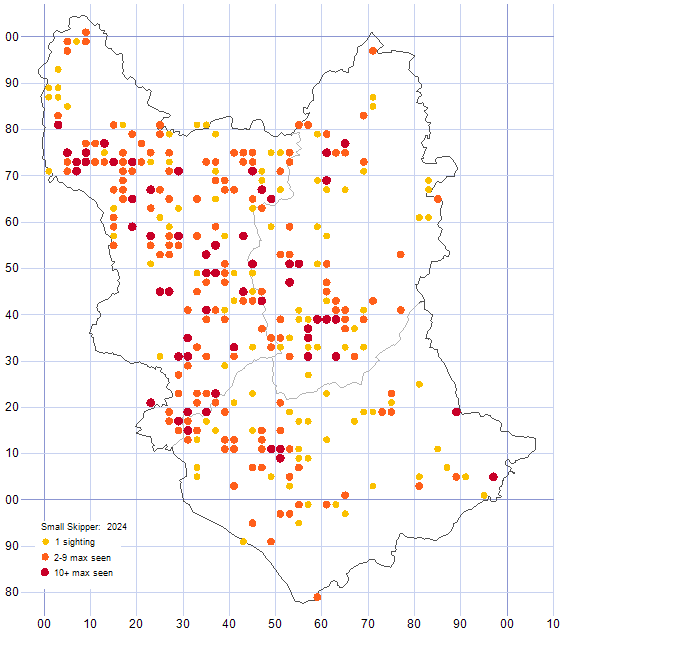
| No of tetrads | 306 |
|---|---|
| First sighting | 01/06/2024 |
| Last sighting | 14/09/2024 |
Photo Gallery
Similar or Easily Confused Species and ID Hints
Essex Skipper Thymelicus lineola
The Small Skipper is very similar to the Essex Skipper in both looks, habitat and flight times. Though the adult Essex Skipper has a shorter flight time, starting later in June and continuing through until late August.
The most striking difference between the adults is the tips of the antennae: in the Small Skipper these are orange-brown, whereas the Essex Skipper's appear to have been dipped in black ink.
The males also differ in the size and shape of the “sex-brands” on the fore wings. In the Small Skipper these are slightly curved, in the Essex Skipper shorter and straight.
The caterpillars are also similar in body markings, but with the Small Skippers head being green and the Essex Skipper striped with brown.
Large Skipper Ochlodes venata
A larger and more widespread orange skipper, the Large Skipper also flies and feeds in similar habitats and times as the Small Skipper and Essex Skipper. All three skippers rest in a distinctive pose with their fore and hind wings held at different angles. The Large Skipper is distinguished from the others by being slightly larger, and also having brighter undersides and more variegated markings on the upper wings.
